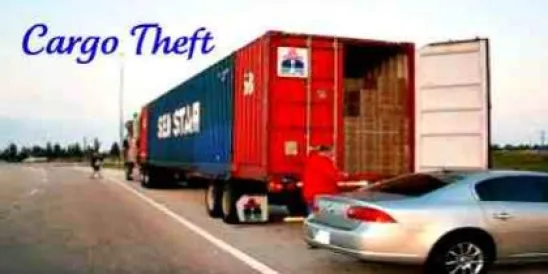Violent attacks on cargo delivery vehicles in Europe represent a frightening and expensive trend.
A truck filled with mobile phones approaches a border crossing in France. The driver brings the truck to a stop and is approached by the guards. The only problem is that this is not a real border crossing and these are not real guards. They are thieves who have devised a scam to steal cargo.
Cargo theft is a serious problem globally, but in each region of the world it takes on its own special characteristics. In Europe, for instance, violent attacks on drivers and daring heist schemes are much more common than they are in the United States.
As the global economy continues to weaken and show signs of heading into another recession, the risk of cargo theft increases as desperate people become more willing to steal goods and cash-strapped consumers become more willing to buy pilfered products. This puts businesses that source or sell goods internationally in a vulnerable position, especially any that ship across European borders.
Theft of cargo can result in a financial loss for the individual shipper or the buyer (depending on the terms of sale) but will also disrupt the larger supply chain. By understanding the locations where cargo is at greatest risk and some of the methods that criminals have been using, businesses can reduce the potential for a loss or disruption.
TRENDS IN EUROPEAN CARGO THEFT
The United Kingdom, France, Italy, Germany and the Netherlands all reported high rates of cargo theft in 2010, according to a February global assessment report by FreightWatch International, a supply chain security consultancy. That does not mean cargo thefts are not a problem elsewhere, however.
Cargo theft statistics show most thefts occur in countries where companies are likely to report incidents. FreightWatch cautions that the actual number of thefts in locations where businesses remain silent, such as Eastern Europe and Russia, is far more difficult to estimate. But just because theft data is sparse does not mean thefts are rare.
Meanwhile, among reported incidents, the average value per theft continues to rise. Thieves are seeking a higher return for their efforts than ever. In the UK, for instance, the value per theft increased 70% in 2010 compared to 2009.
One reason for this is because some trucks are soft targets. Intrusion-based robberies are more popular in Europe, for example, because of the types of trucks commonly used. In Europe, trailers are usually loaded and off-loaded from the side instead of the back as they are in the United States. And they are usually ?soft-sided? trailers, those covered with only a curtain or a tarp. It is much easier for a criminal to gain access to this type of trailer compared to ?hard-sided? trailers. Instead of breaking locks and seals, the thief simply has to cut through the material.
Violence is also more common in Europe. In the second quarter of 2011, 14% of cargo theft incidents involved violence, according to a second quarter report from the Transported Asset Protection Association (TAPA). Moreover, in Europe, many of the thefts take place during the week when the driver is with the truck.
By contrast, less than 2% of all recorded incidents in the United States involve violence, as most cargo thefts take place at times when the truck is left unattended. More than half of cargo thefts in the United States occur between Friday night and Monday morning.
While cargo theft can be a problem for any business that ships goods, the companies most susceptible are those that deal in products that are popular with consumers, such as designer clothing, footwear and electronics. But it is not just consumer goods that are being threatened. In Germany, France and Italy, copper was the most stolen product in the second quarter, according to the most recent TAPA quarterly report. Other popular targets for cargo thieves include auto parts, furniture, construction materials, food and beverages, wine and spirits, and pharmaceuticals.
LOSS CONTROL
When shipping goods in or to Europe, there are a number of steps companies can take to reduce the risk. Drivers should know how to identify locations that are at high risk for cargo theft so they can avoid stopping there. Whenever a vehicle stops moving, it becomes vulnerable. Businesses also need to work with their freight forwarders and logistics companies to make sure best practices are followed.
In addition, companies should take certain precautions to protect their cargo. One step is to use hard-sided trailers for high-value goods that can be secured with locks and seals. Corporate logos and descriptive names on exterior packaging should also be eliminated. They only encourage thieves by making it easy to identify big-ticket items. Another precaution is to use embedded tracking devices. By placing these devices in the cargo, shippers can quickly locate and retrieve stolen items before the thieves ever realize that the goods were being monitored. Businesses should also consider purchasing inland and ocean marine insurance to protect themselves from losses caused by the theft of goods being transported over land, air or sea.
Companies that are shipping goods in Europe should be aware of the risks. As the global economy lags and many people remain jobless, the temptation for cargo theft grows. Social unrest, as demonstrated by the riots in London and other parts of the continent earlier this year, has become a growing concern, further increasing the chance that a business will be the target of looting and crime. But by taking measures to protect their goods, companies can avoid a loss -- both for their business and for other companies throughout their supply chain.
-----------
Michael Casella is president and CEO of Chubb Insurance Company of Europe.



 />i
/>i

